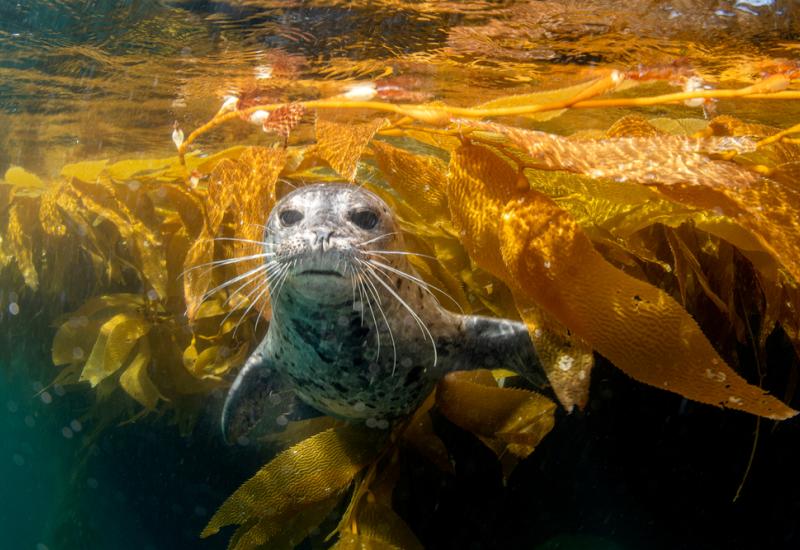San Clemente Island: Scuba Diving on California's Vibrant Hidden Gem
COVID-19 travel restrictions and border closings are constantly evolving. There is no guarantee that the dive sites mentioned within this article will be open at your time of travel.
My dive buddy and I wake to the sound of the chain sliding on the windlass anchor and jump out of our bunks to reach the diving deck. It’s 6 a.m., and we’re at remote San Clemente Island, the southernmost of California’s Channel Islands, about 41 miles offshore from Los Angeles.
The U.S. Navy owns the island and uses it as a combat training ground and bombing range, but luckily, the area is open to civilians, which gives divers the chance to explore its underwater wonders. And divers here don’t hesitate to make the trek.
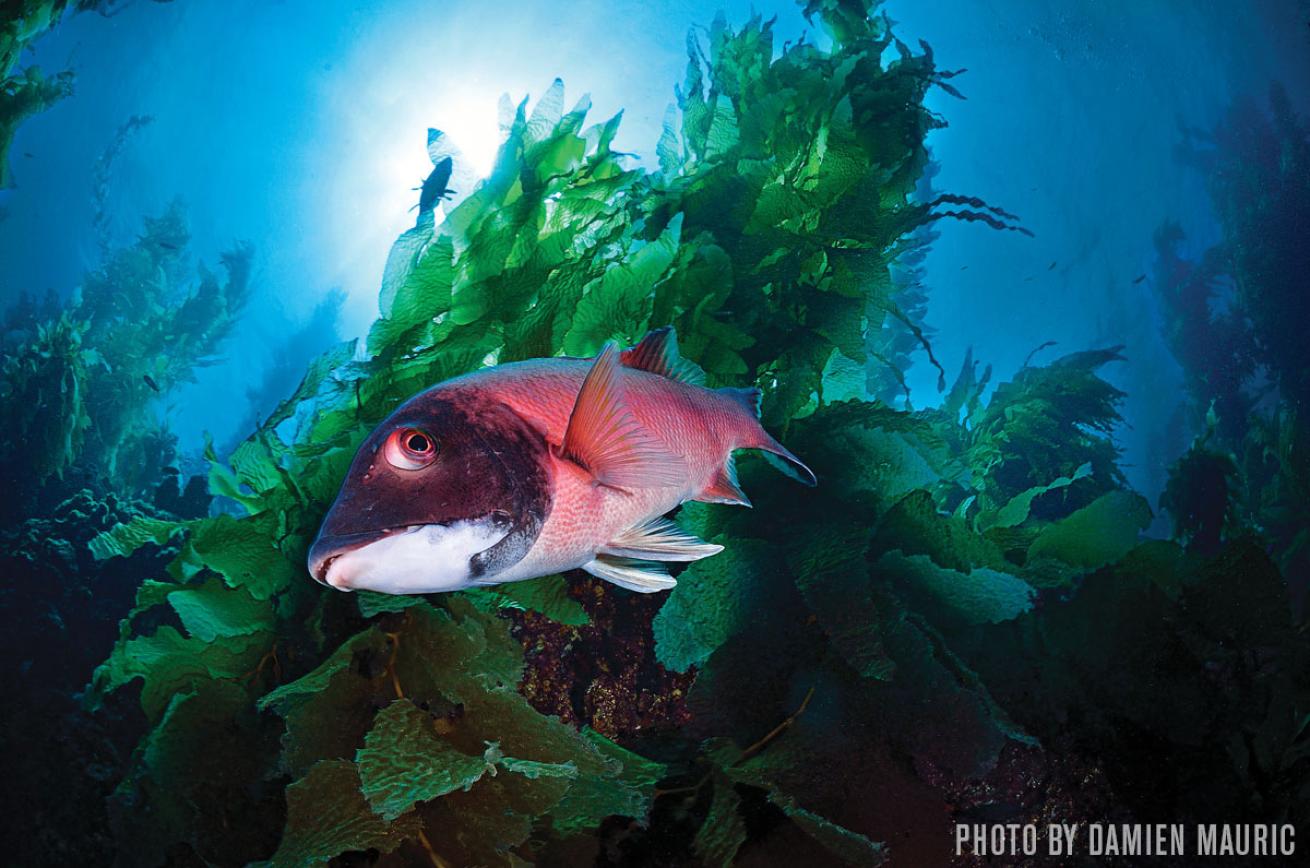
Damien MauricDuring mating season (between July and September) male sheephead become territorial when defending their spawning territory.
Having been warned of the potentially strong current and surge, both of which can make for a challenging dive, we make our descent down the anchor line. Today, we couldn’t have asked for better diving conditions — the sea is calm, and the water is clear. Our dive begins in a sandy cove with the friendly welcome of a seal pup that quickly takes a liking to our bubbles. We follow our newfound guide to a gigantic rock reef set against a brown-and-green kelp forest, shooting toward the surface. Quite the opposite experience from the topside excitement, this underwater world exists peacefully, like a well-guarded secret. With massive coral stands and impressive kelp forests, dives here deliver a peek into an undisturbed land populated by feisty garibaldis, schools of blacksmith darts, lurking lobsters and even the rare soupfin shark — a sighting that gives anyone full bragging rights during the long trek back home.
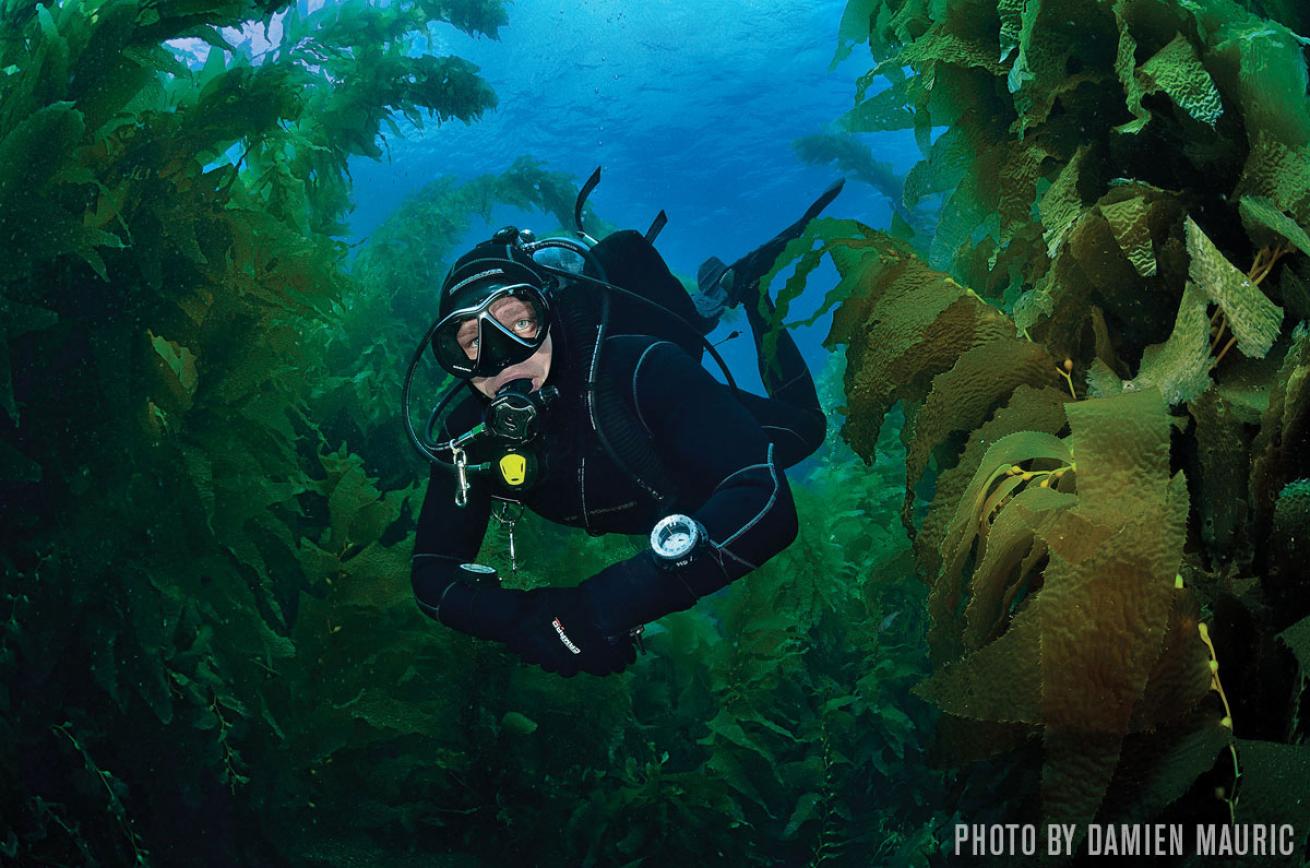
Damien MauricDiving in the incredible giant kelp forests of San Clemente is an unforgettable experience.
How to Get There
San Clemente is the southernmost of California’s Channel Islands. Relatively remote from the mainland, it sits 41 miles ofshore, and if the conditions are rough, the crossing can take up to eight hours. San Clemente dive sites are only accessible via operators offering multiple-day-liveaboard or all-day trips from the Los Angeles and San Diego areas.
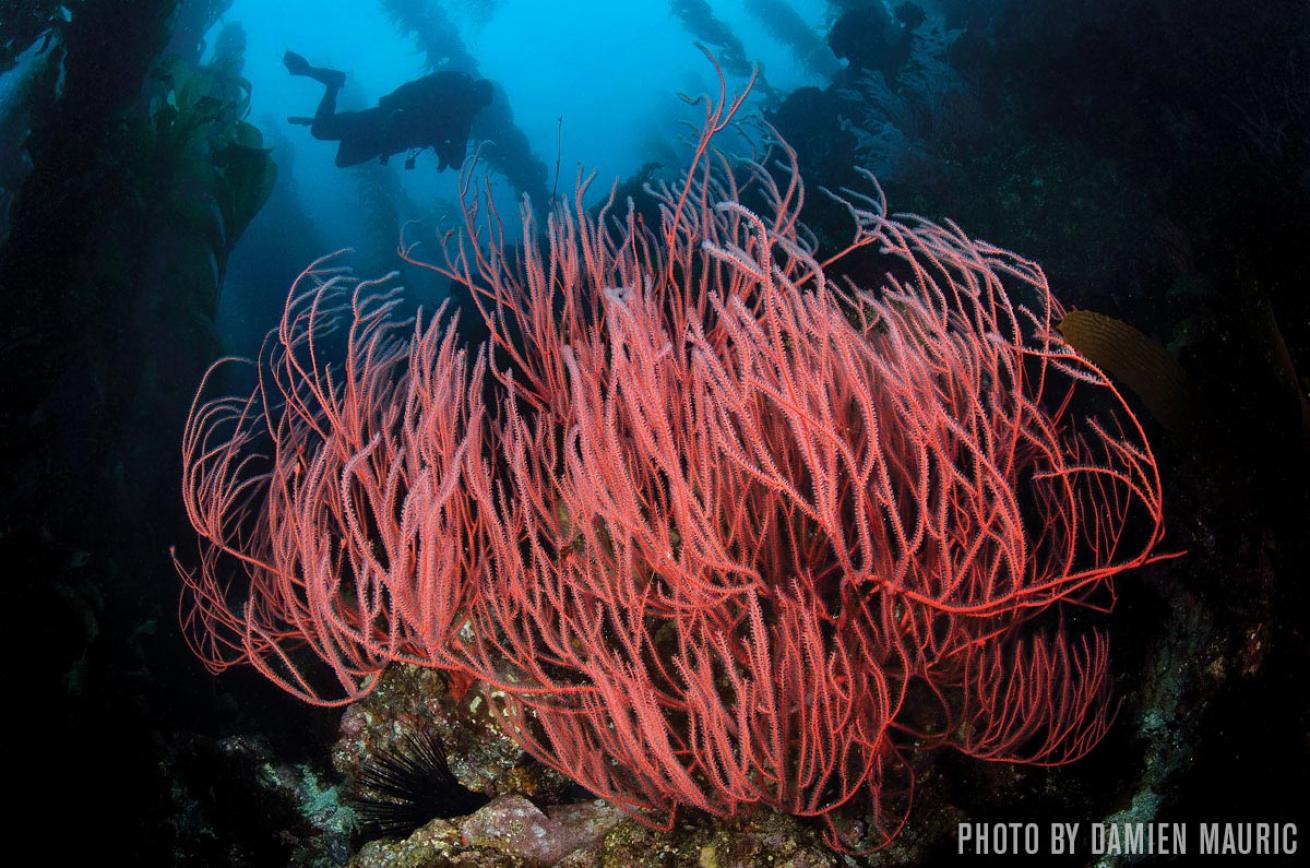
Damien MauricA red gorgonian sways gracefully with passing currents and swells. This colonial invertebrate clusters in groups on rocky reefs at depths of 40 to 200 feet.
Divers Guide to San Clemente Island
Average water temp: 50°F in winter; up to 68°F in summer
What to wear: Semidry wetsuit or drysuit
Average viz: Visibility ranges from 40 to 60 feet in winter and spring; 60 to 100 feet in summer and fall
When to go: June to November; the island is only accessible via boat, with occasional closings by the U.S. Navy
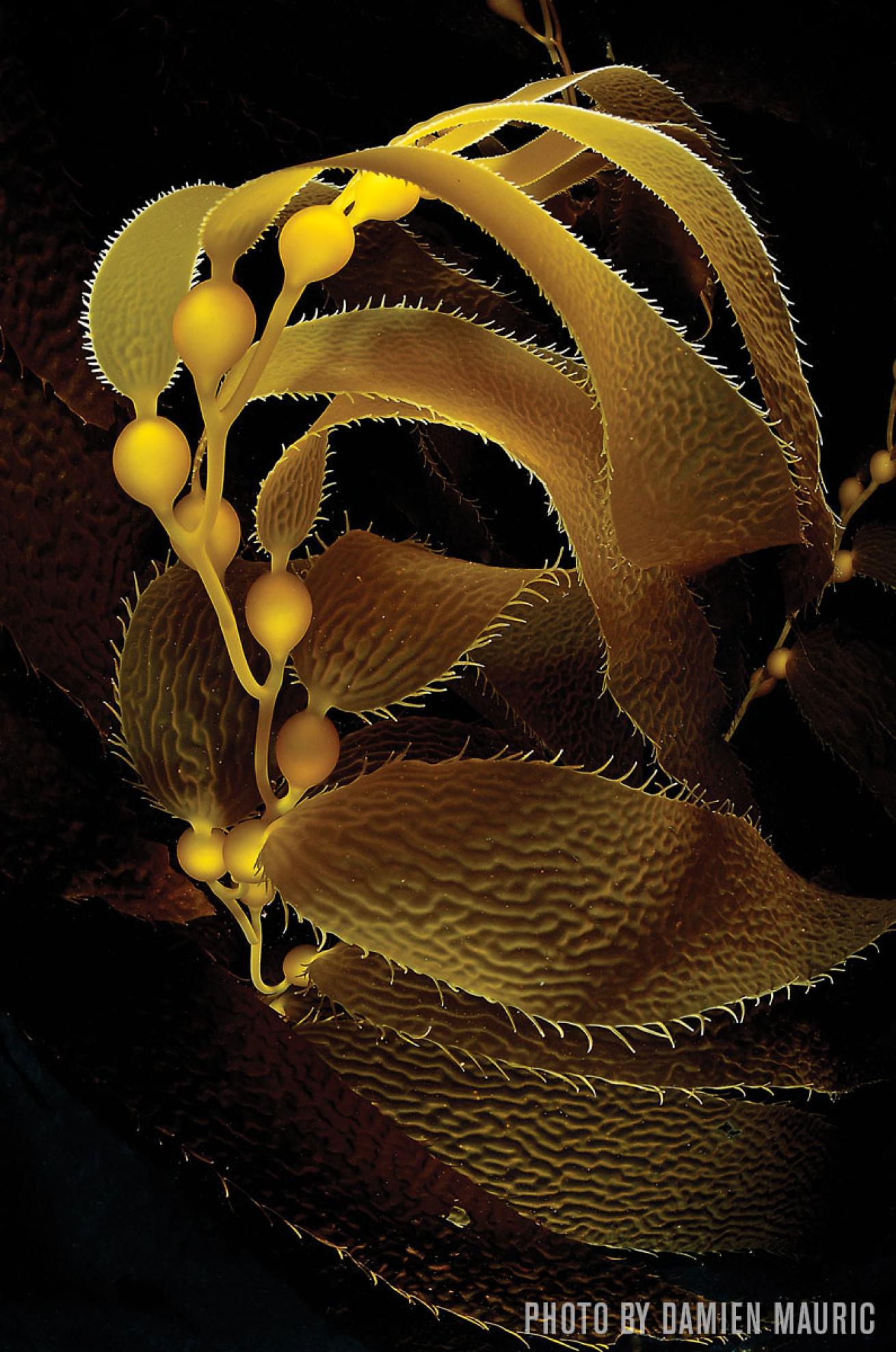
Damien MauricThe majestic stalks of the kelp forest can grow an astonishing 2 feet per day.
Don’t-Miss Dives
Seal Cove
Located on the west side of the island, Seal Cove is a popular rookery for seals, sea lions and playful pups that are both curious and comfortable in the company of divers.

Damien MauricBlacksmiths often school in large numbers among the shadows of the kelp and in open water.
Pyramid Reef
This site is home to a healthy kelp forest towering over a shallow reef. The reef itself features abalone, ledges hiding timid lobsters, and giant stands of gorgonian sea fans.
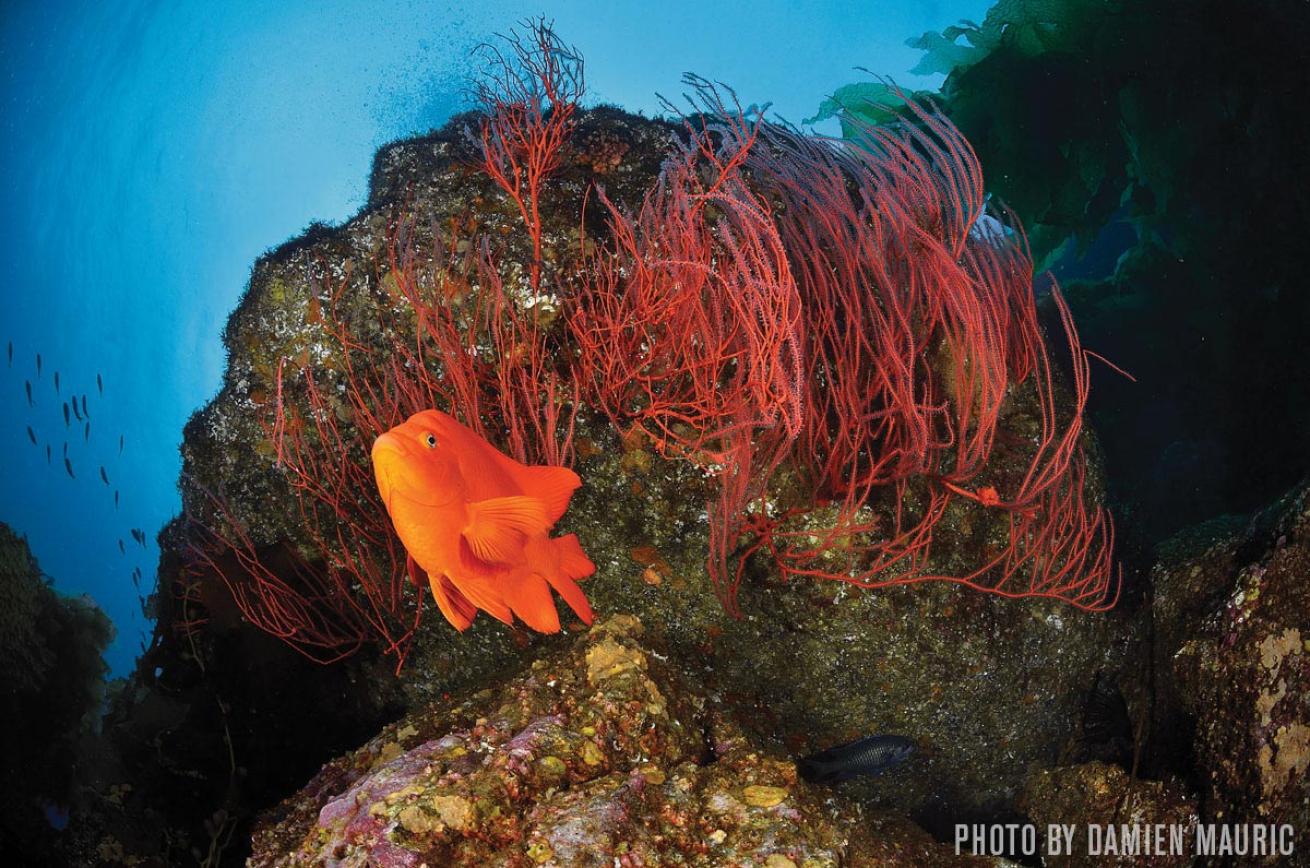
Damien MauricCommon in the warmer waters of Southern California and the Channel Islands, vividly colored garibaldis are extremely territorial and sometimes aggressive at close range.
Little Flower
Located in a protected cove, this large reef boasts hearty kelp stalks, bright sea fans and large schools of blacksmith darts. The highlight for many divers is an exciting encounter with a soupfn shark.
Pacifc Star: pacifcstardiving.com
Sundiver: sundiverinternational.com
Truth Aquatics: truthaquatics.com



